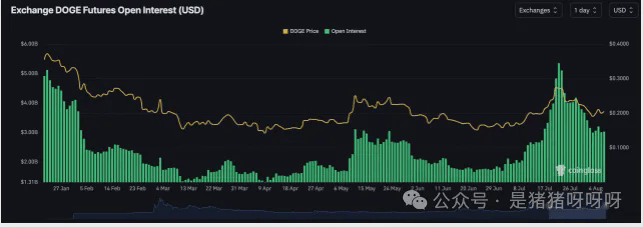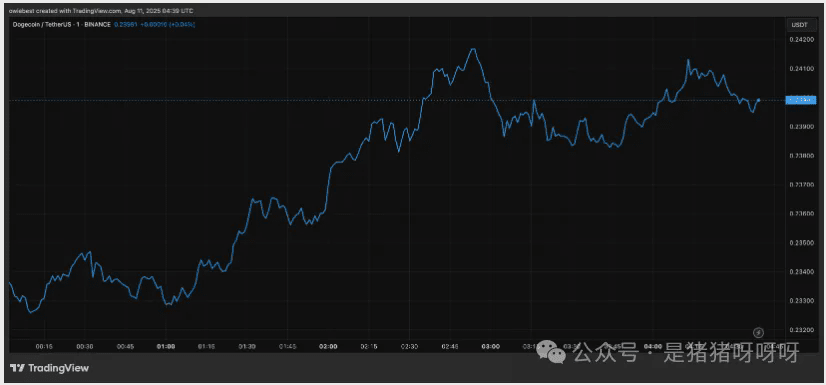Recently, amidst the fluctuations in the crypto market, the setbacks faced by institutional short strategies and the long-short battle over meme coins have become focal points. The London investment firm Abraxas Capital faces huge floating losses from shorting cryptocurrencies, while Dogecoin, although its unclosed contracts have declined, still maintains high levels, and the struggle between market bulls and bears continues to intensify.
Abraxas's Short Position Floating Loss of $190 Million: Hedge Strategy Failure or Market Reversal?
London-based investment firm Abraxas Capital Management Ltd has drawn widespread attention from the market due to its cryptocurrency short strategy, with unrealized losses climbing to nearly $190 million. On-chain data shows that the company's associated accounts have established a large number of short positions against mainstream digital assets such as Bitcoin, Ethereum, Solana, Sui, and Hype, originally intended to hedge the risk of spot holdings, but the continuously rising market has reversed this bet.
Among them, the short positions in Ethereum have become a major loss area, with this one loss exceeding $144 million — the company holds a short position of 113,800 ETH, and the current value corresponds to a significant loss scale.

Although large asset management institutions often hedge volatility through short positions, Abraxas's strategy performed poorly this time. Market data shows that the company simultaneously holds $573 million in ETH spot and $69.4 million in Hype assets, with positions likely being delta positive and delta neutral, while its short bet of over $800 million against Hyperliquid also faced losses, and centralized exchanges like Binance may have undisclosed holdings.
Crypto expert Samson Mow analyzes that investors holding large amounts of ETH and Bitcoin often profit through a cycle of 'selling after raising prices by swapping BTC for ETH', utilizing ETH's rise to cash out and then converting profits back to Bitcoin. He believes that it is challenging for ETH to break historical highs, stating, 'the closer it gets to psychological barriers, the stronger the selling pressure, forming a situation similar to a 'holder's dilemma', while Bitcoin holders need not worry about a decline in the ETH/BTC exchange rate, as Ethereum has long been used as a tool to acquire more Bitcoin.
This incident highlights the impact of institutional hedging strategies on the crypto market and reminds traders that integrating real-time on-chain data with adaptive strategies remains key to coping with volatility.
#Dogecoin Unclosed Contracts Exceed $3 Billion: Can the Bulls Continue Their Rebound?
While institutional shorts are under pressure, the long-short battle over the meme coin Dogecoin (DOGE) is also attracting attention. Although its unclosed contracts have retreated from the peak in July, they currently remain stable above $3 billion, indicating that market interest has not diminished.
In January 2025, Dogecoin's unclosed contracts reached a historical high of $5.5 billion, and after touching $5.35 billion in July, they retreated again, with a decrease of 40% since August. However, the average holding amount of $3 billion remains high, and it has recently rebounded from a low point at the beginning of the month, driving prices upward. Historical data shows that high Dogecoin holdings often accompany price increases, a pattern still evident amidst recent fluctuations.

From the performance in August, there is uncertainty in Dogecoin's trend. Over the past three years, it has closed down in August on average, but so far this month it has risen about 7%, showing bullish momentum. Market analysis suggests that if Bitcoin and Ethereum continue to rise, Dogecoin, as a meme coin, may strengthen accordingly, potentially replicating the strong rise seen in August 2021 after Bitcoin's halving.

Overall, the correlation between Dogecoin's holdings and price remains, whether the bulls can continue their rebound with the market's tailwind has become a short-term focus for the market.
Article Summary
Currently, the intertwining of institutional strategy adjustments and meme coin fluctuations in the crypto market highlights the rapid reversal characteristics of market bets and reflects the differentiated battles across different sectors. For traders, whether tracking changes in institutional holdings or focusing on the price-volume correlation of meme coins, integrating real-time data with historical patterns is an important approach to coping with market uncertainty.
